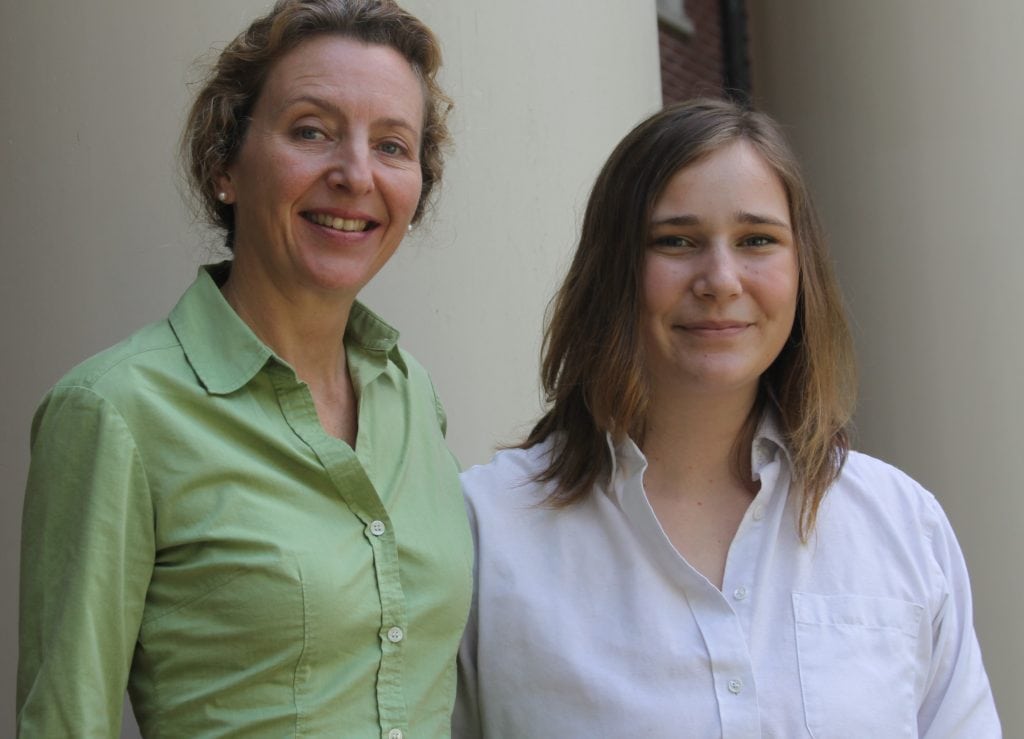Student translates for professor's study of Sienese baptistery
A determination to learn Italian and understand art enabled Claire Sumner ’15 to help one of her professors unravel the mysteries of an old baptistery in Siena this summer.
Sumner helped her advisor and Randolph art history professor Andrea Campbell with a Summer Research project studying the baptistery at the cathedral in Siena. Unlike most baptisteries of its day, it is connected to the cathedral—in fact, it is underneath the cathedral.
 Campbell is writing a book about the baptistery and the frescoes found inside. But it is a rarely studied building, and most of the scholarly work on it is only in Italian.
Campbell is writing a book about the baptistery and the frescoes found inside. But it is a rarely studied building, and most of the scholarly work on it is only in Italian.
Sumner has been to Italy twice to work on restoration projects there. “I would love to work in Italy someday,” she said. “I became interested in learning Italian. It’s one of the languages of art history.”
“Claire impressed me with her dedication to learn Italian,” Campbell said. “She had taken lessons on her own and she has continued private tutoring sessions.”
Translating studies of the baptistery from Italian to English was one of Sumner’s main tasks this summer. She also helped find journal articles and other sources to help analyze the frescoes in the baptistery.
Campbell initially became interested in the building because of the artist who painted the frescoes, known as Vecchietta or Lorenzo di Pietro. Although he was not one of the famous Renaissance artists, his work provides some interesting context about the time period. “There are lots of artists like Vecchietta who have so much to tell us about the 15th century and 16th century,” Campbell said. “In some ways, they are interesting because they challenge the assumptions we have made as scholars.” For example, the works of minor artists demonstrate that the Renaissance was not always a direct linear progression in artistic style, but that progression was more fluid, she said.
The building has a unique history. In the first few centuries after it was built, the city grew in a way that left the cathedral facing away from the new political center of the city. Around 1,200 A.D., the cathedral was rebuilt and the baptistery was moved below it in an effort to reorient it toward the center. “The civic center had a lot of influence on where the baptistery ended up, and the design of the facade of the baptistery,” Sumner said. “The choice to put it there was not just a choice made by the bishop.”
The artwork inside the baptistery also reveals input from the culture of the city, Campbell said. “This really is an expression of the people,” she said. “You might think it’s the church, it’s what the bishop wanted. But it was really by the Sienese and for the Sienese. I think these paintings tell us about the Sienese.”
Tags: art, art history, research, student faculty research, summer research 2014
